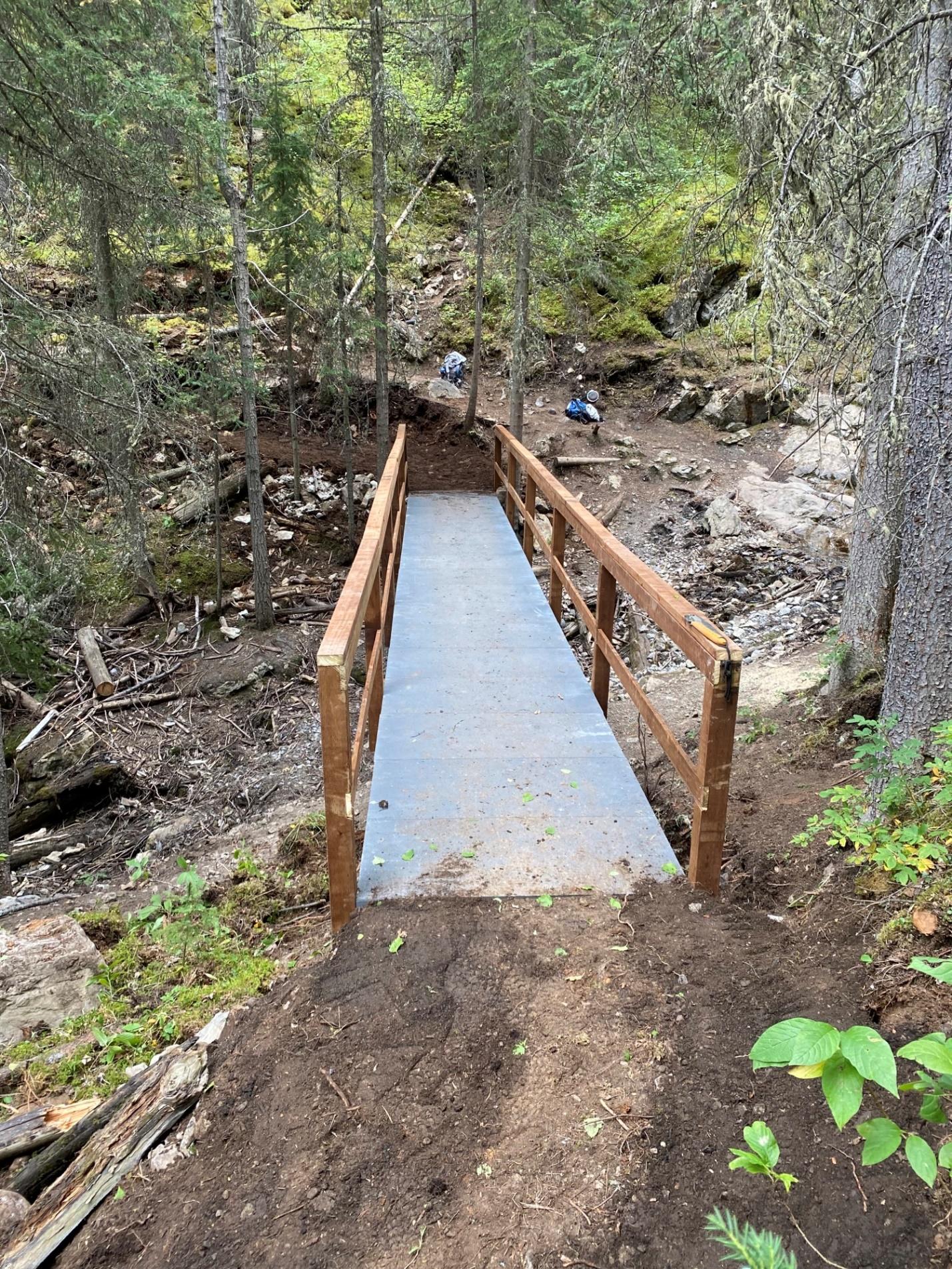Fiber reinforced polymer, or FRP, bridges have been appearing all around the United States, and you can expect only to see more in the future. Bridge engineers working with the material note the significant advantages, including its high strength, low weight, and long lifespan.
Continue reading to learn more about this emerging construction material and the benefits it can offer for your next bridge.
What is Fiber Reinforced Polymer?
Fiber reinforced polymer (FRP) is a material that gains its properties through a manufacturing process called pultrusion. During the pultrusion process, the machine pulls fiberglass strands through a die then embeds them with polymer. The result is a powerfully durable product that you can use in various bridge applications.
Watch this short video to learn more about the pultrusion process.
Fiber Reinforced Polymer and the Bridge Construction Industry
Steel bridges are a common material, but some of their properties make it difficult and expensive to transport, assemble, and maintain over a long period of time. After the first FRP pedestrian bridge was built over 45 years ago in Israel (see referenced source below), engineers began to see the advantages FRP could offer the industry.
To learn more about this bridge material’s evolution over the years, read our article on What Are Beam Bridges Commonly Built From Past to Present.
4 Beneficial Uses of Fiber Reinforced Polymer in Bridge Construction
While the applications are numerous, here are four bridge uses for fiber reinforced polymer in bridge construction.
1. Bridge Abutments
Abutments are the supports at the ends of the bridge that support the bridge and act as a retaining wall for the bank. More information on FRP abutments can be found here.
2. Truss Bridges
- Bicycle
- Equestrian
- Fiberglass Trail
- Footpath
- Golf Course
- Lightweight Vehicle
- Pedestrian Boardwalk
- Pedestrian Footbridges
- Pedestrian Overpass
- Trail
- Walkway
3. I-Beam Stringer Bridges
Includes all the same bridge uses as Truss bridges (listed above), but they are typically used for shorter spans.
4. Decking
- Bridge decking
- Boardwalks
- House decks
- Mezzanines
- Stair treads
FRP Offers Considerable Advantages Over Steel and Wood
After learning about the many uses of FRP in bridge construction, here are some significant advantages why it’s the ideal material of choice compared to steel and wood.
100+ Year Lifespan with Minimal Maintenance
FRP is the ideal material option for trail bridges or bridges located in remote locations that are hard to access due to its lightweight (making it easy to transport to a site), ease of installation (only hand tools are required, no heavy equipment), and easy upkeep.
Corrosion and UV Resistant
FRP is a highly durable material that endures against many environmental locations.
Less Weight = Lower Transportation Costs
FRP bridge components weigh 125 pounds or less, which gives you several options for transporting bridge parts.
- Airlifted
- Hand-carried
- Trucked
Unique Design Constraints
The FRP material offers unique design constraints. It’s approximately 60% of the tensile and compressive strength compared to steel. It allows for about 10% of the modulus of elasticity. It also can clear span lengths of up to 80 feet.
If selecting FRP for your next bridge project, make sure to work with a company that is familiar with the material because FRP can deflect significantly. At Areté Structures, our team adjusts this by building mechanical camber into the bridge. This prevents “sagging” in the bridge.
Simple Assembly Using Unskilled Labor
At Areté Structures, all components are prefabricated and ready to assemble when shipped to the bridge site. Workers can use simple hand tools to build the bridge, saving on additional costs.
How Much Does It Cost to Build a Pedestrian Bridge?
Now that you know more about FRP and its advantages, read Cost of Building a Pedestrian Bridge: FRP, Wood, & Steel if you want to learn more about its cost.
Request a Quote for Your FRP Bridge
At Areté Structures, we partner exclusively with Strongwell, the world’s largest FRP manufacturer, to provide you with the highest quality FRP material available. Then, when you’re ready to begin your bridge project, our team will assess your project requirements and provide you with a quote.
Contact us using our online form here.
Reference: T&D Publications: A Guide to Fiber-Reinforced Polymer Trail Bridges

